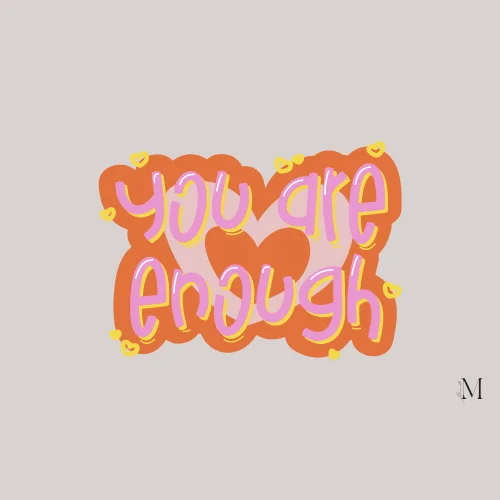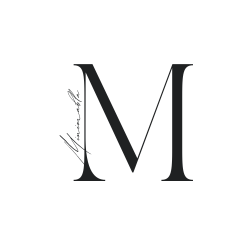Hello Cool-Girls ! As we grow up, our priorities change, and so do the world’s priorities. With increasing frequency of natural disasters, we’ve become more aware of climate change and environmental challenges. While no single individual can reverse the effects of climate change, the collective power of our actions is undeniable. Our joined habits can significantly influence the world’s trajectory, indeed we witnessed companies that have adapted to align with changing societal values. A recent movement, the underconsumption core, is gaining popularity. This lifestyle, which opposes overconsumption, emphasizes buying only what’s needed and consuming what we already have. Here are 7 tips to help you gradually embrace this lifestyle !
1. Change your mindset : the Candle Theory
What I’ve noticed in my journey to fight overconsumption is that it’s not just corporations that are manipulating us into buying more; there’s also a psychological dimension to consumer behavior. Most of us are aware of the negative impacts of overconsumption on climate change and the working conditions in poorer countries. Yet, we still feel a strong urge to buy, followed by a temporary sense of reward. It’s almost like a compulsion we’ve collectively agreed to. This compulsion lies at the heart of the problem. That new trendy lip balm won’t bring lasting happiness. Maybe it’ll give you a week of satisfaction, but then you’ll crave something else. Companies often target our emotions, such as fear, envy, or desire, when marketing their products.
Nowadays, companies reach us more through influencers because influencer marketing feels more personalized. Influencers trigger envy; they don’t just market a product, they market their lifestyle. By buying their products, you feel like you’re buying a part of their life. If you perceive them as prosperous, with luxury homes and seemingly happy families, you’re more likely to buy their products. You buy that scented candle because it’s easier than confronting the deeper issues of what you truly desire, things that money can’t buy.
We don’t want a new scented candle we want the time to burn it
If you think about it, we don’t want a new scented candle we want the time to burn it. We don’t want this lipbalm we want the same confidence of this stunning model, we don’t want this new mug we want to the time to sip our morning coffee without rushing into work traffic. I am not saying to not buy candles, lipbalms and mugs BUT to ask ourselves do we need another one if the previous one is still usable.
We can also go deeper by shifting our focus if we feel overwhelmed by our buying habits. Why do I need this item? What feeling do I expect to achieve? How can I achieve this feeling without consuming?
2. 3 strategies to adopt the underconsumption core
The Pending List
Create a list of things you want to buy. Whenever you want to buy something, consult this list.
Also, create a list of things you craved. Keep it for a few months (2-3 months) and revisit it. You’ll likely realize you no longer want those items. Why? You were probably influenced by marketing and didn’t truly need them.
By questioning your desires and delaying purchases, you can become more mindful of your habits and adopt the underconsumption core.
The 3 steps filter
Before buying something from my list, I filter it through several criteria. First, I ask myself if I like it solely because it’s trendy. Second, I consider if I’ll still wear it in five years. Finally, I assess the material quality to ensure it will last. If the item fails any of these criteria, I won’t buy it.
Find your style and building your essential wardrobe, makeup, homedecor
The pending list of essentials helps me ensure I always have something to wear. I used to buy pieces I loved or that were trendy, without considering how they’d fit into my wardrobe. My closet was full of expensive pieces that didn’t coordinate. I lacked basic items like white shirts and sweaters.
Finding your style and building a list of essentials is important. When we chase trends, we lose our sense of identity and find it harder to discover our own style.
To discover your style, I recommend using Pinterest to create boards of outfits you like. When shopping, think in terms of outfits, not individual pieces. For example, if you love those knee-high boots, consider what you could pair them with from your existing wardrobe.
3. Buy Better but Less Before Underconsumption Core
It may seem counterintuitive, but to embrace underconsumption core, you must first consume. Your probably noticed that many items don’t last as long as we’d hope. From quickly fading sweaters to pilling coats and short-lasting fragrances, we often find ourselves replacing items prematurely.
So, how can we ‘buy better’? Isn’t quality usually overpriced? By carefully reading labels and researching materials, we can find affordable, high-quality products and avoid overpriced, low-quality items.
Buy Better Clothes
I have different approaches to beauty, fashion, and home decor. When building my essential wardrobe, I start by researching items online. This allows me to compare prices, fabrics, and composition at my own pace. I prioritize natural fabrics like silk, wool, cashmere, and 100% recycled cotton and linen. These fabrics offer better temperature regulation, keeping you warm in winter and cool in summer.
When shopping in-store, I inspect the seams to ensure quality. If high-quality items are still out of budget, consider exploring thrift shops for quality pieces.
Buy Better Beauty
I quickly realized that the more I used beauty products, the more I needed them. The more I used concealer and skincare, the worse my skin became, creating a vicious cycle. I discovered that the quality of products plays a significant role.
Before adding a product to my list, I scan it with the Yuka app to check for safety. I avoid allergens and endocrine disruptors that could harm my health in the present or in the futur.
Recently, I’ve started focusing on non-comedogenic skincare and makeup, which has drastically improved my skin. By choosing products that won’t clog pores, I’ve reduced my reliance on makeup and skincare, and my skin looks better naturally.
Buy Better Furnitures
I’m passionate about home decor, and like fashion, it’s often driven by overconsumption. That’s why I promote ‘old money’ interior design, which emphasizes underconsumption core and focuses on high-quality materials and timeless colors and fabrics. You can check out my article for more on this style.
The best advice I can give is to develop your own unique style. Don’t blindly follow trends or copy others’ interiors. Create a custom made interior by finding inspiration from Pinterest. Take your time and build your dream interior slowly.
Prioritize high-quality natural materials like wood, stainless steel, silver, 100% recycled cotton, linen, and glass. Explore flea markets for sustainable and unique pieces. And before making a purchase, ask yourself, ‘Will I still like this in ten years?





